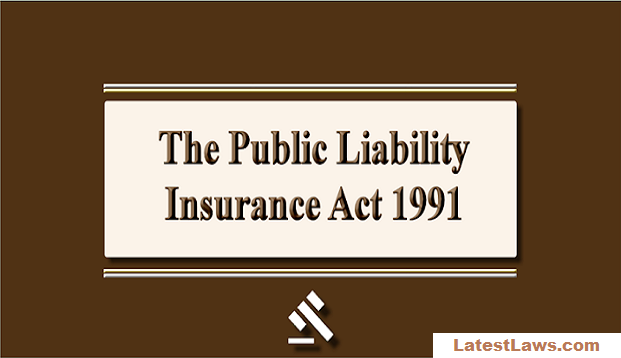August 12, 2018:
The Author, Amritha Priya Dharshini .J.K is a 5th Year student of School of Law, Sastra University. She is currently interning with LatestLaws.com.
INTRODUCTION:-
This act was enacted on January 22, 1991.This act was mainly brought up as a result of the fatal Bhopal Tragedy that killed over 3000 people and injured many others. The 1991 act was framed with provisions that required factory owners to insure against potential personal injury and property damage in the surrounding communities.Q.1) What is the purpose of this act?
Ans: To provide immediate relief to persons (other than workmen) affected by accidents occurring while handling hazardous substances and for matters connected therewith or incidental thereto, through the insurance amount paid by the owner of the hazardous substance.
Q.2) What is Public Liability Insurance?
Ans: It is the insurance covered against any hazardous substance / any other property by its owner and the same is paid as relief or compensation to the claimant who has been injured / any damage has been occurred due to that hazardous substance/property.
Q.3)What is the specialty of this act?
Ans: It ensures `No Fault Liability’ against the owners of hazardous substances. In other words,it could be said that the owner of a hazardous substance must have insured so that any person injured or died of any hazardous substance could claim compensation , without going into any question of fault on the part of the owner.
Q.4) Who are the persons that can insure?
Ans: Every owner of any hazardous property,before handling that property, shall take one or more insurance policies providing contracts of insurance whereby he is insured against the liability to give relief claimed by the person injured or suffered any loss occurred due to that hazardous substance.
Q.5) Who can apply for claim/relief under this act?
Ans: a) The person who has sustained the injury,
- b) The owner of the property to which the damage has been caused,
c)The legal representatives of the deceased, in case of death occurred as a result of the accident and
d)The authorized agent of the above mentioned.
Q.6) To whom the claim or relief is applied?
Ans: Any application for claim or relief under this act shall be made to the collector under whose jurisdiction the accident occurred/hazardous substance lies.
Q.7) What is the time limit to apply?
Ans: Five years from the date of occurrence of the accident.
Q.8) What is the procedure after entertaining the application?
Ans: The collector, after entertaining the application, shall issue notice to the parties and give opportunity of being heard. Then, the collector holds an inquiry regarding the amount claimed and determines a final amount to be settled as compensation.
The copy of the award delivered should be delivered to the parties within 15 days from the date of delivery of the award.
Q.9) What about the binding of the award?
Ans: The award is binding on the parties and the insurer who is liable to pay the amount mentioned in the award, shall pay the amount within 30 days from the date of announcement of the award.
Q.10) What is the procedure when the owner who is liable to pay the relief , is likely to dispose the property to evade the payment of the relief?
Ans: The collector may grant a temporary injunction to restrain such act under Order XXXIX of the Code of Civil Procedure,1908.
Q.11) What are the penalties for non-compliance under this act?
Ans: Both imprisonment which extends from 3 months to 7 years and fine which extends from Rs.1000 to Rs.1 lakh for non-compliance of a vide range of provisions of this act.
Picture Source :

























